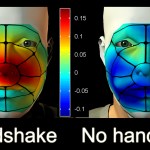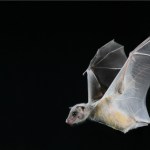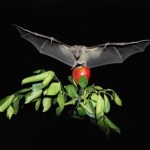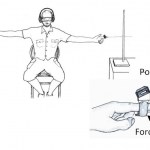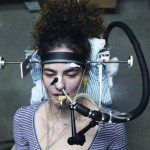Perception
It must be Friday. I found myself perusing YouTube videos and I came across these showing pet tortoises that have figured out how to solve some interesting problems such as:
Using the doggie door to enter a house...
If that does not work, many have figured out how to just open the back door...
Some have even figured out how to open the refrigerator...
After watching these videos, I naturally went in pursuit of any information I could find as to whether tortoise intelligence has been tested scientifically. In support of many pet owner claims, tortoises do exhibit signs of…
Is this science writer jazzed that ninth-grade girls from a religious girls’ school in Jerusalem won a space/science contest? You bet your sweet solar-powered spacelab she is! It is not just that these girls beat out a lot of other classes (over 400), or that they break more than one stereotype. They also came up with a pretty clever idea for studying the Sun: Send a spacecraft to scatter assorted nanolabs all over an asteroid that is about to pass close to the Earth on its way to the Sun. The contest is held every year in memory of Israeli astronaut Ilan Ramon, who went down with the crew of…
The whisking of a rat’s whisker is a classic example of “active sensing” – in other words, sensing that involves movement. Prof. Ehud Ahissar studies rat whisking in order to understand how mammals perceive through all types of active sensing; without the continuous movement of whiskers, fingertips or eyes, our perception of our surroundings would be lacking. (If you don’t believe us, try feeling the texture of your shirt or desktop without moving your fingers. You can’t stop your eyes – as you read this, your eyes are actually moving back and forth in tiny movements.)
In the latest research…
Today's guest blogger is Idan Frumin, a student in the group of Prof. Noam Sobel in the Neurobiology Department. Their research on the transmission of odor compounds while shaking hands appears today in eLife.
It all started one day after lunch, sometime back in 2011. We sat in the lab’s living room (Yeah, we have a living room. And a bedroom. And a blind pet cat. But that’s a different story), when Noam asked – ever wonder why people shake hands?
– To show you don’t have a saber up your sleeve – I immediately retorted.
– But that seems odd, doesn’t it? After all, we’re not in the…
Not everyone gets their research written about by this week’s Nobel Prize winners:
All mammals face the challenge of navigating in complex, three-dimensional (3D) environments, whether they are swinging from branch-to-branch in forests or burrowing underground tunnels. How does the brain maintain a sense of place and direction in 3D? In a beautiful study published on Nature's website today, Finkelstein et al. report that bats have an internal neural compass that tracks direction in 3D during both surface locomotion and flight.
That’s from Prof. May-Britt Moser in Nature’s “News and Views.”…
When we navigate through our environment, do we track mostly in two dimensions or in three? Clearly, we can move in all three dimensions, but does our internal map relate to the vertical direction in the same way as it does to the horizontal axes on the ground?
That question has not yet been definitively answered, but recent research on flying bats shows us what three-dimensional navigation looks like in the brain.
It turns out that fruit bats also mostly navigate in two dimensions, since quite a bit of their flying time involves getting from their caves straight to their favorite fruit…
"This one will look like a jellybean," the session director warns us. "Or, you know, when you empty a hole punch? The circles of paper that fall out? One of those." She's talking about Neptune, and I am about to step, carefully, up a ladder painted industrial yellow and wheeled into place in front of the centenarian eyepiece of the 60" Hale telescope at Mt. Wilson Observatory, incidentally the very place where Edwin Hubble, in 1925, discovered that our galaxy was not the entirety of the Universe, and later, that our Universe was expanding.
A jellybean, a piece of confetti: it seems her…
Weizmann Institute scientists have created a “white smell.” Think about white light or white noise: Each mixes a bunch of different waves together from various parts of the visual or audible spectrum. Those wavelengths combine such that we perceive that unobtrusive light or sound we call “white.”
How do smells fit into this scenario? Prof. Noam Sobel and his group have already shown that smells have their own spectrum – ranging from pleasant to unpleasant – and that this relates to the chemical structure of the odor molecules. Is this spectrum truly analogous to that of light or sound? That…
We have been told what it’s like to be a bat or a bird; now Prof. Ehud Ahissar and Dr. Avi Saig are getting people to experience what it’s like to be a rat. Specifically, they want the participants in their studies to learn what it’s like to locate things in the dark by twitching their whiskers.
The point, of course, is not to get humans to pretend they are actually rats, but to see how they learn to sense the world with a new sense. Whisking is a fairly complex sense, involving spatial coordinates – horizontal, vertical and distance from the base of the whisker – and timing. It only works…
Blurring, chopping and blocking. Three online items this week all deal with some pretty dynamic phenomena.
The blurring is in our perceptions. It turns out that if you even think you have lost money in an experiment, your ability to distinguish between musical notes will be hampered. What’s the connection? Dr. Rony Paz has been showing that this tendency to lump sounds together is tied to fear. In our evolutionary past, humans may have survived because anything that sounded remotely like a predator aroused an immediate “fight or flight” response. But if mild stress can provoke a similar…
The olfactory membranes in your nose are densely packed with smell receptors. These receptors come in some 400 different subtypes; complex odors like that of rose petals can waft around 175 distinct kinds of odor molecules in the direction of your nose. In other words, the number of discrete odors we can perceive runs to the tens of thousands. No wonder scientists had thought that the whole smell arrangement was basically random.
But research by Prof. Noam Sobel and his team in the Weizmann Neurobiology Department is bringing our noses into line with our other sensory organs. The arrangement…
LOOK at the photograph on the right. Does it show the face of a man or a woman? There's no right answer - the photo has been manipulated to look sexually ambiguous and can be perceived as either. But according to a recent study published in the journal Psychological Science, the sense of touch can influence how you perceive and categorize the face.
Last year a team of European psychologists found that bodily movements alter the recollection of emotional memories, and an American group showed that the sense of touch influences social judgements and decisions. The new study adds to the growing…
There are two quick and fairly easy approaches to reducing US emissions of CO2 by several percent. These reduction would be at the household level, possibly decreasing the household cost of energy by between 20 and 30 percent (or more, depending on the household) and decreasing national total CO2 emissions by around 10% or so.
But these approaches are nearly impossible to implement. Why? Because people are ignorant and selfish.
The two methods are: 1) Replace existing technologies with more efficient ones and 2) Use energy less. I'm not talking about replacing technologies at a…
tags: perception, The Magic of the Placebo, placebos, medicine, magic, Eric Mead, TEDTalks, streaming video
Sugar pills, injections of nothing -- studies show that, more often than you'd expect, placebos really work. At TEDMED, magician Eric Mead does a trick to prove that, even when you know something's not real, you can still react as powerfully as if it is. (Warning: This talk is not suitable for viewers who are disturbed by needles or blood.)
What's your opinion? It looked rather contrived to me: The placebo discussion was only remotely related, and seemed only an excuse to perform someï…
"WHEN a man sits with a pretty girl for an hour," said Albert Einstein, "it seems like a minute. But let him sit on a hot stove for a minute, and it's longer than any hour." Einstein was describing one of the most profound implications of his Theory of General Relativity - that the perception of time is subjective. This is something we all know from experience: time flies when we are enjoying ourselves, but seems to drag on when we are doing something tedious.
The subjective experience of time can also be manipulated experimentally. Visual stimuli which appear to be approaching are perceived…
Take a listen to this brief audio clip of "Unforgettable."
Aside from the fact that it's a computer-generated MIDI performance, do you hear anything unusual?
If you're a non-musician like me, you might not have noticed anything. It sounds basically like the familiar song, even though the synthesized sax isn't nearly as pleasing as the familiar Nat King Cole version of the song. But most trained musicians can't listen to a song like this without cringing. Why? Because the music has been made "bitonal" by moving the accompanying piano part up two semitones (a semitone is the difference between…
We've discussed synesthesia many times before on Cognitive Daily -- it's the seemingly bizarre phenomenon when one stimulus (e.g. a sight or a sound) is experienced in multiple modalities (e.g. taste, vision, or colors). For example, a person might experience a particular smell whenever a given word or letter is seen or heard. Sometimes particular faces are associated with specific colors or auras. Synesthesia is relatively rare, but the people who experience it are genuine: their perceptions are consistent and replicable.
But one question researchers haven't been able to nail down is…
WE tend to assume that we see our surroundings as they really are, and that our perception of reality is accurate. In fact, what we perceive is merely a neural representation of the world, the brain's best guess of its environment, based on a very limited amount of available information. This is perhaps best demonstrated by visual illusions, in which there is a mismatch between our perception of the stimulus and objective reality.
Even when looking at everyday objects, our perceptions can be deceiving. According to the New Look approach, first propounded in the 1940s by the influential…
It's football season in America: The NFL playoffs are about to start, and tonight, the elected / computer-ranked top college team will be determined. What better time than now to think about ... baseball! Baseball players, unlike most football players, must solve one of the most complicated perceptual puzzles in sports: how to predict the path of a moving target obeying the laws of physics, and move to intercept it.
The question of how a baseball player knows where to run in order to catch a fly ball has baffled psychologists for decades. (You might argue that a football receiver faces a…
It's football season in America: The NFL playoffs are about to start, and tonight, the elected / computer-ranked top college team will be determined. What better time than now to think about ... baseball! Baseball players, unlike most football players, must solve one of the most complicated perceptual puzzles in sports: how to predict the path of a moving target obeying the laws of physics, and move to intercept it.
The question of how a baseball player knows where to run in order to catch a fly ball has baffled psychologists for decades. (You might argue that a football receiver faces a…


